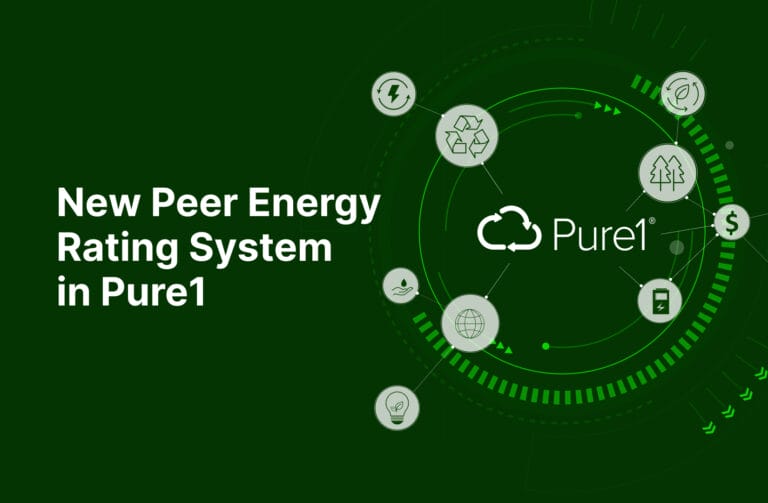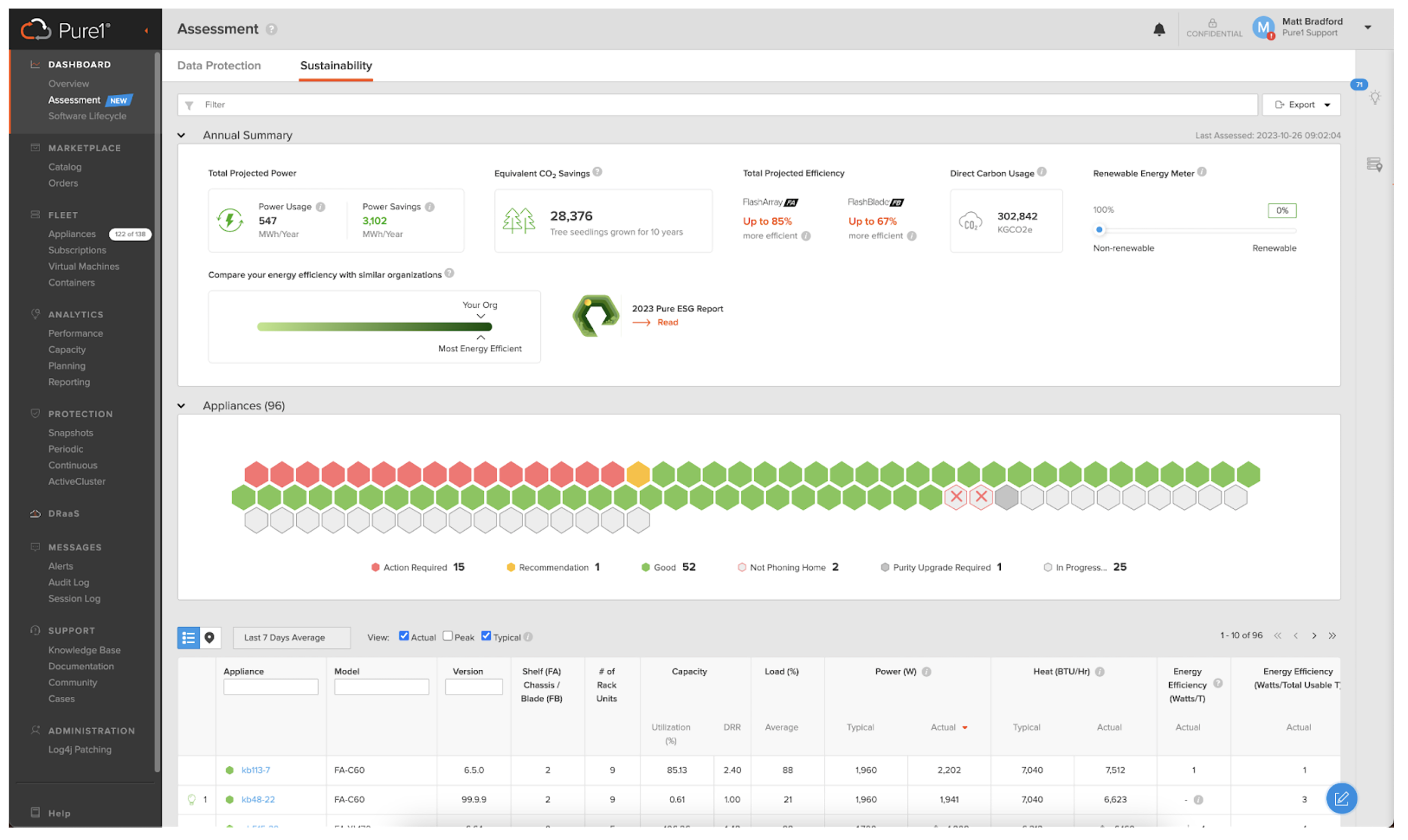Environmental, social, and governance (ESG) analysis is a crucial aspect of evaluating an organization’s sustainability and ethical impact. Pure Storage has developed a process to analyze ESG data and provide actionable insights to help organizations improve their ESG profile. Ultimately, this plan will elevate your ESG.
What this means for you: Clear, data-driven guidance you can put into action right now and see real results.
By adopting all-flash Pure Storage arrays, you’re already on a path of higher power efficiency, sustainability, and space savings…not to mention simplicity and performance!
Optimize Energy Efficiency with Pure1
Figure 1: Pure1 Sustainability Assessment page.
Only Pure Storage gives you full transparency into your storage energy consumption and savings. You’ll find this and more in our Pure1® SaaS storage management platform, which is available at no extra cost to all Pure Storage customers. The Sustainability Assessment shows your total energy consumption and savings as well as data center and array-level metrics. You can read all about it in this blog.
To take things a step further, we’ve added peer information sharing to help customers set goals on how to realistically plan for improvement in their power efficiency efforts. The Sustainability Assessment page in Pure1 provides visibility into your relative power efficiency profile compared to peers.

Figure 2: Power usage metrics and comparison to peers on Sustainability Assessment page.
The ratings are provided as guidance on room for improvement when comparing to similar environments and scale within the Pure Storage customer community. Keep in mind that we’re providing ratings based on the usage of the array and overall configuration. The reason is to help provide guidance on how best to use your environment which is already deployed.
How the Peer Energy Rating System Works
Here’s a closer look at how the rating system works:
Step 1: Data Collection and Clustering
Telemetry data is analyzed along with customer profiles to establish cohorts for similar environments. These are created based on factors such as the fleet size, fleet type, workload, and usage. This clustering process helps identify organizations with similar characteristics, allowing for more accurate comparisons and recommendations.
Step 2: ESG Profile Evaluation
For each cohort, organizations are evaluated on a weekly basis based on their power efficiency profile. The power efficiency profile is based on watts/usable TiB where a weighted average of individual arrays is calculated in the organization in relation to its contributions to the overall usable capacity.
Note that arrays without enough data are excluded from the calculation because we don’t have enough data to calculate a reliable contribution of individual arrays.
Step 3: Identifying Improvement Candidates
If your organization has higher than average power consumption per usable TiB when compared with other organizations that have a similar size, similar usable capacity, and similar average load, you’re rated as a candidate that “can improve.” These organizations are further identified for potential recommendations to help improve their ESG profile.
Step 4: ESG Recommendations
Specific insights and related proactive recommendations are available to help organizations improve their ESG profile. These recommendations may include:
- Upgrading or replacing end of life (EOL) components with more energy-efficient components.
- Upgrading to newer shelves or datapacks (e.g., from 6G or 12G shelves to NVMe).
- Consolidating workloads and optimizing for lower power usage.
- Using larger datapacks (DirectFlash® Modules) to potentially reduce the need for an extra shelf.
- Enhancing the usage of your array for higher capacity (and/or performance).
A few items to note:
- If a customer is newly onboarded, there needs to be about four to six weeks of telemetry data before a cohort is assigned to the new customer for ESG profile evaluation.
- Customers may be reassigned to a new cohort if a significant change in the fleet profile is determined.
- Telemetry data is mandatory to keep the information up to date. The customer may not get comparative data if no array is sending telemetry data within the fleet.
- The arrays without enough data may be excluded from the calculation if the reliable contribution cannot be calculated for the individual array.
Build a Greener Future
Embarking on a journey toward sustainable, energy-efficient solutions doesn’t just mean you’re making an excellent start; it signifies you’re paving the way for a greener tomorrow. With Pure1, you’re not just running on some of the world’s most efficient storage systems; you’re harnessing the full potential of Pure Storage’s innovative prowess.
But it doesn’t end there. Our new peer rating system serves as your sustainability compass, providing clear insights into how your efforts measure up against similar organizations. It’s more than a benchmark; it’s a community of progress, inspiring you to unlock new levels of efficiency and environmental stewardship.
Curious about where you stand? Eager to uncover insights tailored just for you? Log in to Pure1 and immerse yourself in a world of actionable recommendations waiting to propel you further on your sustainability journey. The future is efficient, and with Pure Storage, it’s brighter than ever. Join us in making a difference, one watt at a time!
![]()







